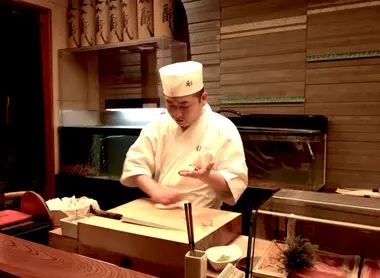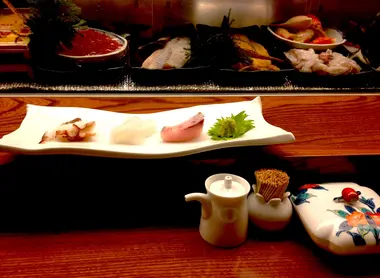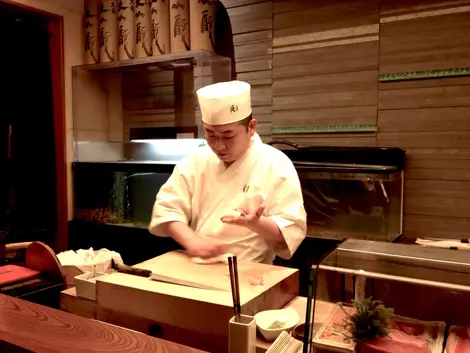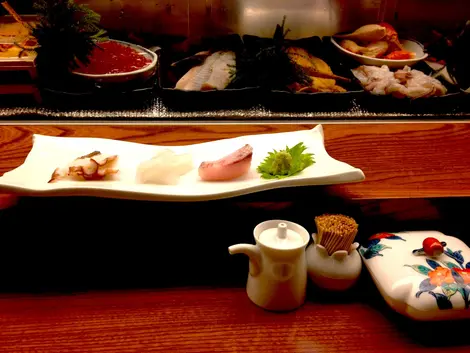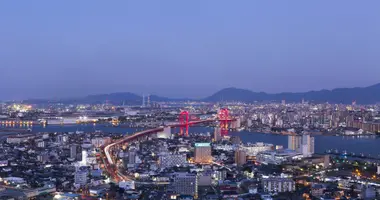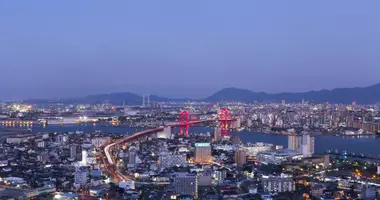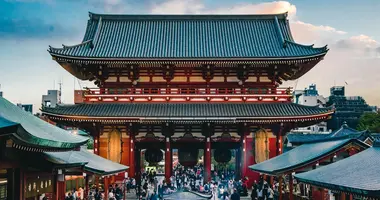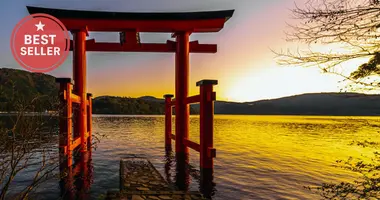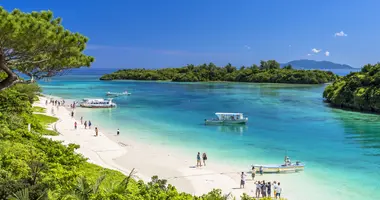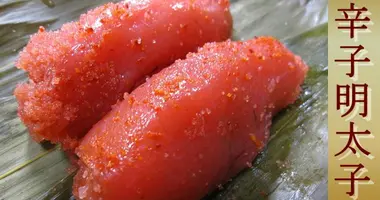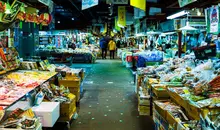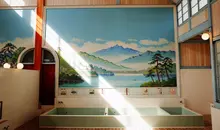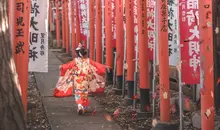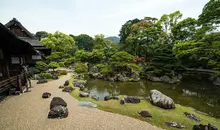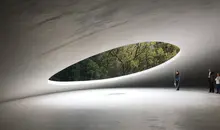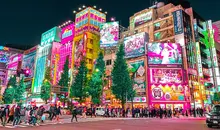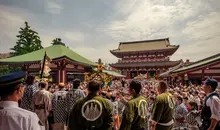The best sushi restaurants in Fukuoka: a complete guide to a gastronomic journey
- Published on : 06/03/2014
- by : G.L.
- Youtube
Fresh and refined
The city of Fukuoka, located on the island of Kyushu, is a sushi lover's paradise. While this metropolis is best known for its delicious râmen, it is also home to some of Japan's finest sushi restaurants. From traditional establishments to more innovative addresses, Fukuoka offers exceptional culinary diversity in the art of sushi. Each chef brings his or her own personal touch, creating a unique gastronomic scene well worth exploring. Whether you're a connoisseur or a curious novice, this guide will reveal the secrets of the best sushi restaurants in Fukuoka.
Understanding sushi styles in Fukuoka: between local tradition and Edo style
In Fukuoka, two major styles of sushi coexist, each reflecting a different approach to this ancestral culinary art. The first, the Kyushumae style (also known as the Southern style), is unique to the Fukuoka region. Unlike the Edomae style, which developed in the Tokyo area, the Kyushu style is distinguished by its emphasis on the exceptional freshness of local seafood. While the Edomae style is often described as an art of "subtraction", where fish is marinated or aged to develop its flavors, the Kyushumae style is considered an art of "addition".
This fundamental difference can be explained by Fukuoka's privileged geographical location. Situated at the crossroads of three seas, the city enjoys direct access to a wide variety of fish and seafood of incomparable freshness. Local chefs have therefore naturally developed techniques that accentuate this freshness rather than seeking to preserve it, as was the case in Tokyo when preservation techniques were less advanced.
In the Kyushumae style, fish is very lightly marinated, if at all, and is often enhanced by the addition of local salt and citrus fruits such as kabosu, rather than the reduced soy sauce favored in the Edomae style. Recipes are developed with the evolution of flavors in mind, with ingredient combinations that may surprise purists, but create a unique taste experience.
The Edomae style, meanwhile, has also found its place in Fukuoka, brought by chefs trained in Tokyo or keen to offer an alternative to local traditions. This style emphasizes technical perfection and scrupulous respect for tradition, with firm rice often seasoned with red vinegar and fish prepared according to ancestral methods.
Tenzushi: Southern-style sushi excellence in Fukuoka
If you're looking for the ultimate Kyushumae-style sushi experience in Fukuoka, Tenzushi Kyomachisa must. Located in the town of Kokura, just 15 minutes by high-speed train from Hakata station, this restaurant is considered one of Japan's most exclusive addresses.
Founded in 1939 as a street stall, then transformed into a restaurant in 1949, Tenzushi has built its reputation on a unique approach to sushi described by the chef as "sushi by the addition". Chef Amano, who inherited the style forged by his father, honors these flavors while constantly experimenting to take them to the next level. Behind his somewhat intimidating appearance lies a chef with a big heart, welcoming every customer with warmth.
The establishment has only five counter seats, making it one of the hardest reservations in all of Japan. Gourmets from all over the world flock here to sample this unrivalled cuisine. The minimalist elegance of the room is designed to create a soothing atmosphere, with the gentle sound of flowing water and a carefully chosen soundtrack.
Tenzushi's signature creations include akaika (red squid) nigiri garnished with sea urchin, flying fish roe, sansho pepper seedlings and multicolored sesame seeds. The shrimp, lightly blanched for a perfect texture, offers an incomparable sweetness. Chef Amano also marries chutoro (medium-fat tuna) with a dashi made from tuna flakes rather than the traditional bonito, creating a perfect harmony that exalts the fish's natural flavor.
Sushi Sakaï: the Edo-style experience in the heart of Fukuoka
For those wishing to experience the excellence of Edomae style in Fukuoka, Sushi Sakai represents the pinnacle of this traditional art. Nestled in a gourmet district in the center of Fukuoka, this restaurant is the brainchild of chef Daigo Sakai, who offers a true immersion in the art of classic Edomae sushi.
From the moment you walk through the door of Sushi Sakai, you're transported to the tranquil world of old Japan. Designed by one of the country's finest sukiya-zukuri architects, Maeda Shinji, the space features wonderful detailing, where everything from softly lit lanterns to bamboo blinds follows traditional Japanese aesthetics.
At the heart of Sakai's nigiri is rice, the fundamental element of all good sushi. Its rice is firm and flavorful, using a delicate blend of ripe rice and flavored with two types of red vinegar. The grains unravel delicately in the mouth, each bite altering the way the sushi tastes and feels.
Among her favorite starters is a generous piece of monkfish liver bathed in dashi broth. Creamy, rich and full of flavor. Slices of octopus, tender and juicy, release the sweetness of the sea with every bite. The nigiri feature the best catches from Kyushu's local seas. A slice of young sea bream, with a long slit down the middle, drapes the red rice like a silky blanket. Kohada (herring), the classic Edomae sushi fish with a gorgeous blue sheen, is aromatic and bold in flavor.
Rated gold on Tabelog for two consecutive years, Sushi Sakai offers a complete sushi experience, blending nigiris and small tsumami dishes. The chef believes that the two cannot exist without each other, with the small dishes setting the stage for the nigiri that follow. Together, they create the ultimate complete sushi experience.
Teruzushi: a unique and spectacular approach to Fukuoka-style sushi
For a resolutely different experience, Teruzushi offers a theatrical and spectacular approach to sushi that has conquered social networks and attracted gourmets from all over Japan. Located in Kitakyushu, the restaurant is run by Takayoshi Watanabe, third-generation owner of this establishment founded in 1964.
Sporting an eccentric red bow tie that contrasts with the pure white of his chef's outfit, Watanabe-san extends his arm theatrically towards diners, a piece of sushi resting on his palm, with an expression both mischievous and sincere. In this restaurant, the chef takes on the dual role of sushi master and master of ceremonies.
The entertainment value he has integrated into the dining experience has earned the restaurant a national reputation. Social network savvy gourmets share photos of the showman holding huge fresh fish with the stern gaze of a sumo wrestler, or posing menacingly with his huge katana-like knives.
But it's not just about the show - the taste is excellent too. Watanabe-san works closely with local fishermen and brokers to source the freshest, largest fish. Each ingredient has a unique story, which it proudly tells: whether it's a tale from the local docks or the story of a journey from a remote corner of Japan.
Teruzushi's famous "eel burgers" are one of the unique highlights of the menu, served alongside a range of classic nigiri and regular fresh inventions from the mind of one of Japan's most original sushi masters. The chef also pays particular attention to the preparation of the rice, using a vinegar specially designed for Teruzushi by Fukuoka-based manufacturer Shoubunsu Vinegar.
How to book your sushi experience in Fukuoka: tips and tricks
Booking a table at Fukuoka's top sushi restaurants can be a real challenge, especially for popular establishments such as Tenzushi or Sushi Sakai. Planning is essential for these exceptional dining experiences.
For Tenzushi, considered one of Japan's most exclusive addresses with only five seats at the counter, it's practically essential to use your hotel's concierge service or a specialized reservation service. Reservations usually open several months in advance and fill up almost instantly. If you're determined to dine there, plan your trip around that reservation rather than the other way around.
For Sushi Sakai, though equally renowned, booking is a little more accessible. Places open up around three to four months in advance via platforms like Tablecheck. With good planning, it's relatively easy to get a seat. Lunch and dinner menus are identical, giving you greater flexibility in your choice of schedule.
As for Teruzushi, its reservation policy is more flexible. Despite its growing reputation, it's still possible to secure a table by booking a few weeks in advance. This is an excellent option for travelers who have not been able to plan their meals months in advance.
For all these establishments, it is advisable to scrupulously respect reservation times, as late cancellations may incur charges. If you don't speak Japanese, please mention this when booking, so that the establishment can provide an English-speaking member of staff or translated menus.
Budget and value: options to suit all budgets
The sushi experience in Fukuoka can be adapted to different budgets, offering a range of options from street food stalls to Michelin-starred restaurants. To help you plan your dining budget, here's an overview of the different price categories you may encounter.
At the upper end of the spectrum, exceptional restaurants like Tenzushi offer omakase experiences (tasting menu chosen by the chef) for around 44,000 yen (~270 euros) per person. This high price reflects not only the exceptional quality of the ingredients, but also the rare expertise of the chef and the exclusivity of the experience with only a few places available.
In the middle category, establishments like Sushi Dokoro Gou offer excellent quality at more affordable prices. Menus start at around 6,000 yen (~37 euros) for dinner, rising to 10,000 yen (~62 euros) for more elaborate options. These restaurants often offer excellent value for money, with talented chefs serving fresh produce in a more relaxed atmosphere.
For a more limited budget, kaiten-zushi (conveyor-belt sushi) restaurants such as Sushiro or Hamazushi are excellent options. Prices start at just 100-150 yen (~0.62-0.93 euros) per plate, allowing a variety of sushi to be enjoyed for less than 2,000 yen (~12 euros) per person. Although the quality is not comparable to that of high-end establishments, these popular chains nevertheless offer a tasty introduction to Japanese cuisine.
For those traveling on a tight budget, the food departments of department stores (depachika) and supermarkets also offer fresh sushi platters at reasonable prices, especially at the end of the day when discounts can be as much as 60%.
Local specialties and must-try sushi menus in Fukuoka
Fukuoka and the Kyushu region are renowned for certain fish and seafood specialties that frequently feature on the menus of local sushi restaurants. Here are a few not-to-be-missed items for your culinary journey.
Akaika (red squid) is one of the region's emblematic specialties. At Tenzushi, it is served as a nigiri topped with sea urchin, flying fish roe and sansho shoots, creating an explosion of flavors and textures. Its firm, slightly sweet flesh offers a unique taste experience rarely found elsewhere in Japan.
The region's Toyomae anago (eel) is particularly prized for its melt-in-the-mouth texture and rich flavor. Unlike unagi (freshwater eel), anago is less fatty and has more delicate notes that go perfectly with vinegared rice. At Teruzushi, don't miss their famous "eel burger", an original creation that reinvents this classic.
Local seafood such as Kyushu kohada (herring) is also a must. At Sushi Sakai, kohada is served with its characteristic blue sheen, offering a powerful, distinctive flavor that contrasts wonderfully with the vinegared rice.
For the full experience, don't overlook the tsumami (small side dishes) that often precede the nigiri in the best restaurants. At Sushi Dokoro Gou, the chawanmushi (egg custard) topped with a shiso leaf and garnished with white sesame seeds is a marvel of delicacy that perfectly prepares the taste buds for the sushi that follows.
Finally, as Fukuoka is surrounded by three seas, seasonal fish are particularly prized. Don't hesitate to ask the chef about the day's catch to discover flavors you might not find anywhere else. At Sushi Dokoro Gou, located at the foot of the grand design hotel Il Palazzo, facing the southern tip of the inner island of Nakasu, you can contact the restaurant on +81 (0) 92 725 1311 for more information on their seasonal specialties before your visit. Their website http://www.jnto.go.jp/restaurant-search/eng/detail.php?rst_code=f097300 also offers up-to-date information on their menu.
